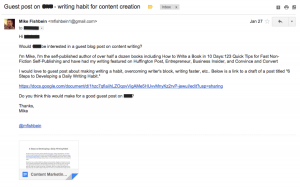I received an email recently from Hulu with a subject line that read, “Justine, Thanks for Canceling!”
I hadn’t cancelled my Hulu subscription, and I worried that someone had accessed my account. Then, I remembered that my husband and I have a joint account, which is registered to his email address.
When I opened the email, I found that it referred to a cancellation that was more than a year old, and Hulu was asking me to give the service another try. It was an email that focused on Hulu’s marketing goals but may have neglected to consider the impact it would have on recipients.
I can’t be the only person to share an account with someone. Perhaps Hulu did consider this possibility but decided that meeting its goals was more important than confusing a few people.
But could Hulu have avoided confusing me and others who share accounts? Almost certainly.
When sending marketing emails, it’s important to look beyond marketing goals and consider the objectives of the entire organization. The intent can’t simply be to sell products; we must embrace the breadth of our customers’ journeys with our brand, and a strategy needs to be evident from the beginning.
Think Like a Designer
Poorly targeted emails are all too common. To avoid them, we should learn from the way designers solve complex communication problems. Instead of focusing on the sell, we should be focusing on the human. We need to consider every possible side of the story before sending an email, and that means going beyond the obvious.
Knowing our products and services well is a given, but what about considering other aspects of the business? If something is unclear, our customers — and the customer support and social media teams who field customer queries — will suffer.
At my company, we compile a creative brief for every email we send. It sounds complicated, but it’s actually pretty simple. We ask ourselves six questions and write down the answers. The answers to those six questions form the backbone of the campaign, and writing them down guarantees that they stay top of mind as we plan out the rest of the email.
1. Who are we emailing?
HubSpot lists 27 ways to segment an audience that can help us communicate with customers. Each segment requires a different approach. For instance, sending a free trial offer to someone who’s already paying for a service doesn’t take the customer life cycle into consideration. When that happens often enough, customers can feel like they’re not being understood, and that alienation can damage the relationship.
Before sending any email, we must first consider our audience members’ demographics, their habits, and the problems they’re trying to solve.
2. What do we want them to do?
Every email campaign must have a specific goal. Without that goal, crafting and measuring a call to action is impossible. Goals can vary from campaign to campaign. In fact, a variety of offers can help messaging stay fresh and prevent subscriber burnout. One email could solicit customers to register for a webinar, another to read an article, and a third to buy a product or service. Keeping goals relevant to the audience helps build relationships.
3. When should we send the message?
The time of day or day of the week is one thing, but what about the customer life cycle? Will the message we’re sending have more impact if it’s triggered immediately by a user action, or would it be better as a part of a drip campaign?
Finding the right point in a relationship to send a message is crucial. Some messages work best as mass emails, while others work best as transactional messages or automated drip campaigns.
4. Where will the recipient read it?
Some subscribers check emails during their morning commute on a smartphone, while others open them on a desktop in the office or on a tablet in front of the TV at home. Knowing a subscriber’s reading habits helps us understand his or her state of mind when opening our messages, and that allows us to target accordingly. In addition, device data can help us determine when to use responsive templates or mobile-friendly design.
5. Why are we sending this message?
The “why” ties back to the campaign goal, but instead of focusing on the specific metric we’re looking to track, it’s about understanding whether our goal is adding value to the customer — not just our business. We might be building brand awareness, influencing behavior, or driving purchases to hit revenue targets, but we need to understand why the subscriber should care, too.
6. How will we measure success?
Open rates and click rates are two of the most popular ways of measuring email campaign success, but they don’t always show the whole picture. Web traffic, Twitter mentions, customer support inquiries, and referrals to other channels may provide additional indications of how an email may have impacted customer behavior.
For instance, we sent an email to customers who hadn’t logged into their accounts in more than 90 days. The open and click rates were horrible, but when we dug a little deeper, we found that nearly 15 percent of the people who received that email logged into their accounts within a month.
Success can’t always be measured through traditional methods. Sometimes, we need to be more holistic.
Our messages are stronger when we adopt this human-centered approach. By asking ourselves these six questions, we get to the root of our campaigns and ensure we don’t confuse or upset our customers. Instead, we build healthy, long-term relationships that result in quantifiable business impact.
Digital & Social Articles on Business 2 Community(20)



